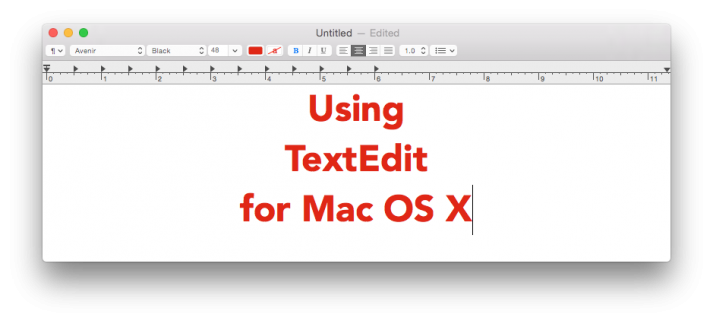
- #Mac os x text editor for programmers mac os x#
- #Mac os x text editor for programmers full#
- #Mac os x text editor for programmers code#
The open command used above uses the same mechanism to open a file using a default application that the Finder does when clicking on a file.

#Mac os x text editor for programmers full#
If the file you want to edit is in another directory, you’ll need to cd into that directory first or specify the full path name in front of the filename. profile is in your home directory, you can edit. Since Terminal will put you in your home directory by default and. profile file, for example, start the Terminal application (searching for ‘terminal’ using Spotlight and clicking on the Terminal application is an easy way to do this). While many third party editors provide options for opening hidden files, if you don’t have one installed, you can easily open these hidden files using TextEdit which is a part of OS X. The problem is that files starting with a period are hidden from listings in the Finder windows, so trying to find a hidden file to open using TextEdit will not get you very far. For the majority of users, editing a text file is warmer and fuzzier using a GUI text editor like TextEdit. There is the pico editor which, for a command line editor, is a little friendlier than vi. For the seasoned veteran, editing this file is simply a matter of dropping to a shell, editing in vi, and :wq’ing. When confronted with the task of editing your.

What follows is a simple way to edit a hidden file using TextEdit without making any changes to the system. I also prefer to edit them using vi, but I know that many folks are likely to think ‘six’ instead of ‘editor’ when presented with vi. While there are tricks to make hidden files visible in Finder windows, I prefer to keep my hidden files hidden. bashrc) can be a challenge to edit because they are, well, hidden and don’t show up in Finder windows. Until the Project Drawer is returned or someone makes a plugin, I'll stick to using 1.5.11 and when that no longer works I'll have to look around for a TextMate replacement.In OS X, hidden files (those starting with a period like. I and I suppose many others don't rely on the project "concept" but sorely need the simple and efficient organization of the Project Drawer. I think the concept of "project" has changed in 2.x, whatever that concept is/was, and I think that the developer associated that concept innately with the Project Drawer, and thus-somehow-the Project Drawer disappeared. I suppose my Project Drawer contains 1,000 files so making a Finder folder with aliases to duplicate the organization of the Project Drawer would take 3-5 GB! It is baffling why this feature has been removed from 2.x. One could imagine making a Finder folder with aliases to all of your files that are represented in the Project Drawer but in recent versions of OS X, aliases are 3-5 MB each, up from a few bytes or KB. Version 2.x does introduce a Finder-level file browser but that does not replace the Project Drawer. Version 2.x of this outstanding text editor introduces the whiplash-inducing removal of the Project Drawer! Without this feature I cannot use the program.

There is a gallery of screencasts showcasing more features at macromates
#Mac os x text editor for programmers code#
#Mac os x text editor for programmers mac os x#
TextMate is a versatile plain text editor with a unique and innovative feature set which caused it to win an Apple Design Award for Best Mac OS X Developer Tool in August 2006Ī rapidly growing community have created modes for more than a hundred different "modes" including support for all major programming languages, writing prose in structured formats such as LaTeX, Markdown, Textile, etc., blogging, running SQL queries, writing screen plays, doing your budget, and much much more


 0 kommentar(er)
0 kommentar(er)
